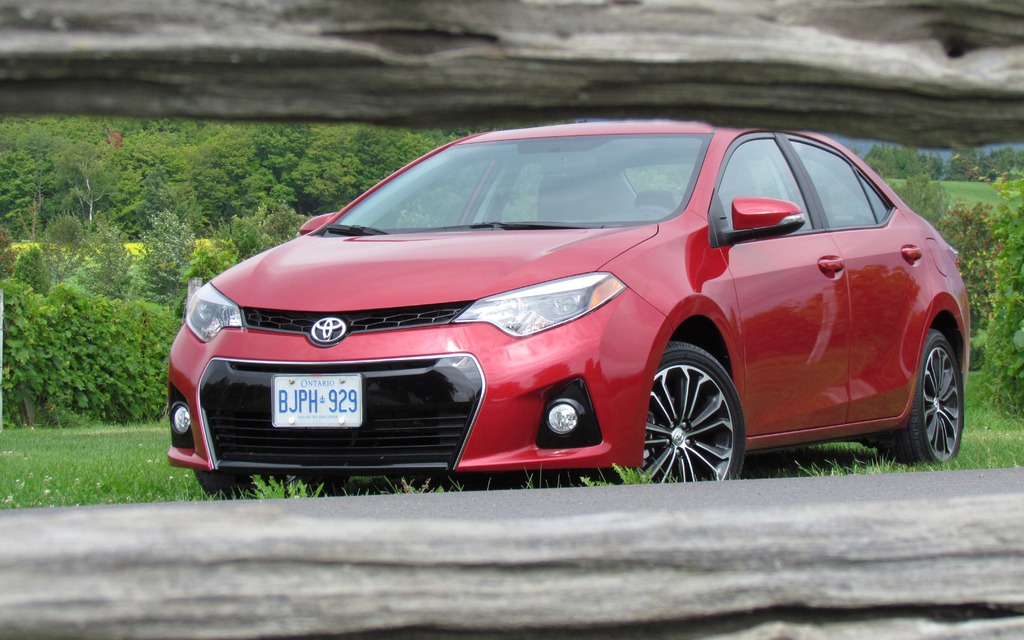2014 Toyota Corolla - Toyota’s Jack of All Trades Gets a Facelift
The Toyota Corolla was introduced in 1966 and since then more than 40 million have been sold around the world. Throughout the decades the Corolla name has become synonymous with reliability, efficiency and value, if not for engaging driving dynamics. It’s the car you use to get the groceries, to drop the kids off at school, and it’s probably the car your father taught you how to drive in when you were a teenager.
The Corolla has been Toyota’s bestselling car for the last 18 years, mostly because it is a great value. For 2014 it enters its 11th generation, and it receives a significant amount of changes. The starting price for the 2014 model is marginally higher than in 2013, at $15,995 for the base CE, an increase of $545. There are three other trim levels in the line up, the S at $19,215, the LE at $19,500, and the newest addition, the LE Eco at $20,250
- Also: 2014 Toyota Corolla : Sportier? More Exciting? Less Awkward?
- Also: 2014 Toyota Corolla Says 'Hello, World.'
Toyota is seeking to find new, younger Corolla buyers, but in Corolla lingo, younger is a relative term. The current median age of the Corolla owner is 52 years old. Toyota is aiming to drop that to 46.
To attract younger buyers, designers began by giving the Corolla a more aggressively styled fascia that includes LED headlights as standard equipment across the four trim levels, a first in the compact segment. Styling is still conservative, but the car exudes a sportier character, especially from the front.
Bigger, better, still a great value
Wheelbase has been stretched by 10 cm to 270 cm, and overall length is also 10 cm longer. The Corolla it is also 160 mm wider and 10 mm lower. The added length improves rear passenger legroom by 75 mm. The larger dimensions also provide additional trunk space, which has increased by 19 litres to 369.
All trims except the LE Eco get the same 1.8-litre, 132-horsepower inline four as the current model, while the Eco gets a new variation of that engine that uses Valvematic variable valve-lift technology to increase output to 140 hp, while reducing fuel consumption. The new engine claims 5.7L/100 km compared to 5.9L for the LE and 6.3L when opting for the manual gearbox. All models but the four-speed automatic have seen a modest improvement in fuel consumption of approximately 0.5 L/100 km.
Toyota was reluctant to use the new engine throughout the Corolla line up, stating that they will wait to see how consumers react to the new engine before deciding if they will introduce it in other models. Although Valvematic engine produces a little bit less torque, at 126 lb.-ft. (2 lb.-ft. less), the torque peaks 1,600 RPM sooner and it feels peppier off the line than the standard engine. It’s a sensible upgrade on what is otherwise becoming a dated engine design.
There are now three transmission options, two of them all new. A six-speed manual replaces the current model’s five-speed unit, and there’s also a CVT available in all but the CE model. The four-speed automatic returns and is optional only on the base CE, which comes standard with the six-speed stick.
In the S model, the CVT is programmed to shift like a seven-speed automatic, while in the LE and LE Eco it works seamlessly, like a conventional CVT. Depending on the trim level, you can choose from different CVT modes, like B mode that increases engine braking when descending hills, Eco mode for saving fuel (available only on the Eco model), S mode for sporty driving and Manual mode with steering-wheel paddles, the last two available only in the S model.
In the S model the CVT works exceptionally well and does a fine job of mimicking a seven-speed automatic, and manual shifts are relatively quick, though the ECU will override your manual commands if engine revs are either to low or too high.
The engine provides acceptable passing power, especially when considering its modest output. It is quiet at cruising speed, but a fair amount of engine noise makes its way into the cabin when accelerating hard at higher revs. Some soundproofing measures have improved cabin sound levels, and the new Corolla is quieter than the current model, but it’s not as quiet as the latest Hyundai Elantra sedan, which is unusually muted for its class.
Quaint and comfortable interior
The interior uses new soft-touch materials, and a new dashboard runs straight across the cockpit, without a protruding control panel in the middle, giving the interior a more airy, spacious feel, while piano-black trim gives it an upscale appearance. All models but the S get a dashboard with three gauges, while the S gets two gauges and a central TFT screen. Seats have been redesigned and are firm yet supportive, providing daylong comfort.
A 6.1-inch touchscreen is the centre of the infotainment system on all but the CE, and it includes radio functions, a CD player, and voice recognition. Bluetooth connectivity, USB and auxiliary ports, and steering wheel controls are standard on all models.
The 2014 Corolla won’t move or shake you in the figurative sense. The changes made are comprehensive, and they’ve raised the quality, comfort and feel of the car to a higher level. Toyota wouldn’t chance making big changes on a car that appeals to so many, so they took small but effective steps in improving the design, while maintaining its appeal and its value-per-dollar quotient. It’s still the dependable, affordable workhorse it’s always been, except that it is now more refined and better looking. That will certainly equate to millions more Corolla sales in the years to come.












